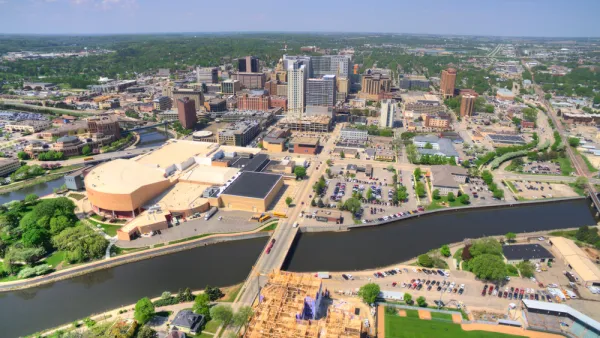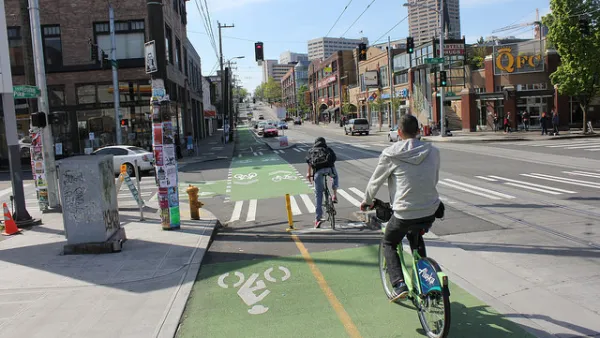Anchorage, Alaska recently completed a citywide bicycle master plan. Despite the costs of the projects in the plan, this oped argues it's exactly the blueprint the city needs to put into action.
"The plan, completed after years of work and under public review since March, is a wish list of about 150 construction projects that will add more than 70 miles of new bicycle lanes, 50 miles of bike paths alongside roads and at least a dozen miles of greenbelt trails."
"The estimated cost for the projects is $81 million over the next 20 years."
"Before succumbing to sticker shock, though, there are a few things to think about. Critics of the plan say we are no Portland or San Diego, and improving the bicycle network in Anchorage (and Chugiak-Eagle River) is an indulgence our northern city can't afford."
"I beg to differ."
"Ask the families of the eight people who have died since 1994 as a result of bicycle-vehicle collisions how they feel about that. Is $81 million too much? By my math, the cost of these improvements comes to a paltry $14.50 per person per year, but it would never come to that. According to Jon Spring, an Anchorage consultant on the plan, a majority of the costs associated with the improvements would come from federal money. And while there is no breakdown of actual taxpayer costs, the truth is, the plan is simply a guide and not an etched-in-stone $81 million bill waiting to be paid. Many of the projects, Spring said, are simple, requiring only painting of bike lanes, to improve safety for commuters and recreational cyclists."
FULL STORY: Anchorage could use Bike Plan

National Parks Layoffs Will Cause Communities to Lose Billions
Thousands of essential park workers were laid off this week, just before the busy spring break season.

Retro-silient?: America’s First “Eco-burb,” The Woodlands Turns 50
A master-planned community north of Houston offers lessons on green infrastructure and resilient design, but falls short of its founder’s lofty affordability and walkability goals.

Delivering for America Plan Will Downgrade Mail Service in at Least 49.5 Percent of Zip Codes
Republican and Democrat lawmakers criticize the plan for its disproportionate negative impact on rural communities.

Test News Post 1
This is a summary

Test News Headline 46
Test for the image on the front page.

Balancing Bombs and Butterflies: How the National Guard Protects a Rare Species
The National Guard at Fort Indiantown Gap uses GIS technology and land management strategies to balance military training with conservation efforts, ensuring the survival of the rare eastern regal fritillary butterfly.
Urban Design for Planners 1: Software Tools
This six-course series explores essential urban design concepts using open source software and equips planners with the tools they need to participate fully in the urban design process.
Planning for Universal Design
Learn the tools for implementing Universal Design in planning regulations.
EMC Planning Group, Inc.
Planetizen
Planetizen
Mpact (formerly Rail~Volution)
Great Falls Development Authority, Inc.
HUDs Office of Policy Development and Research
NYU Wagner Graduate School of Public Service




























